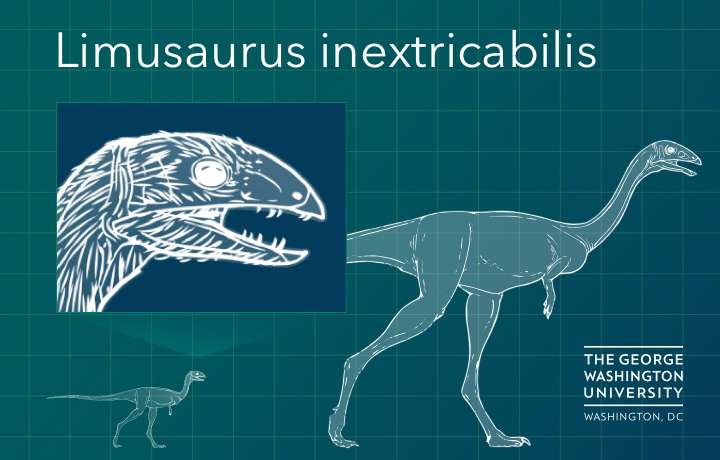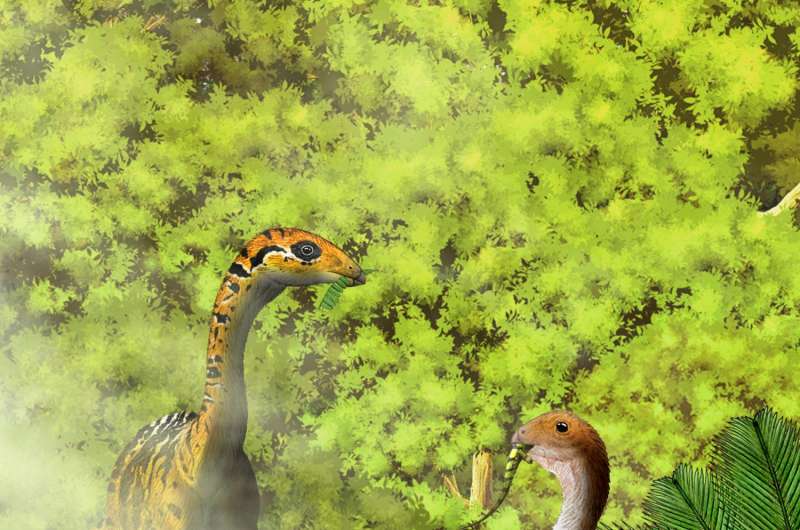These dinosaurs lost their teeth as they grew up

By comparing the fossilized remains of 13 ceratosaurian theropod dinosaurs known as Limusaurus inextricabilis collected from the Upper Jurassic Shishugou Formation of northwestern China, researchers have been able to reconstruct the dinosaur's growth and development from a young hatchling of less than a year to the age of 10. The findings, reported in Current Biology on December 22, uncovered something unexpected: the dinosaurs had teeth as young juveniles that were gradually lost as they grew up.
"We found a very rare, very interesting phenomenon in a ceratosaurian dinosaur whereby toothed jaws in juvenile individuals transition to a completely toothless beaked jaw in more mature individuals during development," says Shuo Wang of Capital Normal University in Beijing, China.
The findings make Limusaurus the first known reptile with the characteristic known as ontogenetic edentulism (meaning tooth reduction or loss in development). Together with other evidence, they led the researchers to conclude that the toothed juveniles were probably omnivorous meat-eaters. The beaked adults most likely transitioned to a plant-based diet.
Wang and colleagues first reported on this ceratosaurian back in 2001. At that point, they had collected just one fossilized juvenile, and they didn't yet know what it was. Over the course of the next several years, more specimens were found. But it wasn't clear that they all belonged to the same species.
"Initially, we believed that we found two different ceratosaurian dinosaurs from the Wucaiwan Area, one toothed and the other toothless, and we even started to describe them separately," Wang says.

As they started to code the dinosaurs' characteristics for phylogenetic analysis, they began to realize that they looked remarkably similar—all except for the teeth. With more careful study, the researchers concluded that in fact the specimens did represent the same dinosaur. It's just that those dinosaurs lost their teeth over time.
The researchers identified 78 developmental changes in Limusaurus in all, with tooth loss being the most surprising. They say that the discovery has significant implications for understanding the evolution of the beak, an important feeding structure in many dinosaurs of the past, as well as modern birds.
Wang says that tooth loss isn't so unusual in animals alive today. There are fish and an amphibian that lose teeth as they grow. Platypuses lose their teeth too. But the discovery is still a first for the fossil record and for reptiles.
The findings suggest that the dietary habits and needs of some dinosaurs changed over the course of their development, most likely along with shifts in their digestive systems. Wang and colleagues will continue studying changes to the digestive system and skeleton in greater detail.
More information: Current Biology, Wang et al.: "Extreme Ontogenetic Changes in a Ceratosaurian Theropod" www.cell.com/current-biology/f … 0960-9822(16)31269-6 , DOI: 10.1016/j.cub.2016.10.043
Journal information: Current Biology
Provided by Cell Press




















